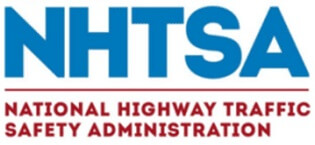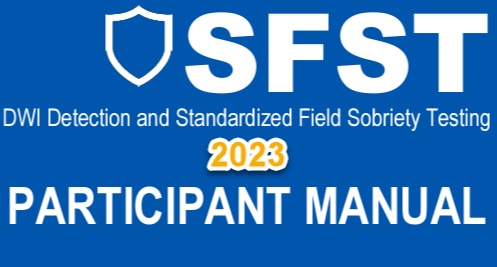By: William C. Head, Founder of DrunkDrivingDefense.com
When alcohol intoxication laws were enacted to criminalize driving under the influence of alcohol, in NY, NM and NJ in the early 1900s, no breath alcohol testing devices existed. Plus, no hospitals were set up and ready with “chemical tests” for receiving blood samples to screen for alcohol content or drug impairment.
 In fact, DUI-drugs laws were not being enacted for well over 15 years later, with slow acceptance by many states to even enact such laws. Signs of intoxication from alcohol were more common and well-known, while drug symptoms were usually more subtle.
In fact, DUI-drugs laws were not being enacted for well over 15 years later, with slow acceptance by many states to even enact such laws. Signs of intoxication from alcohol were more common and well-known, while drug symptoms were usually more subtle.
So, no “tested and approved” drunk driving test method was used at the roadway or at the police station in the early days. So, a person suspected of OUI (operating under the influence) was not asked to do roadside DUI tests or “exercises” (to be used by a police officer). This shortcoming for all law enforcement agencies existed for the first 7 decades, to show how alcohol impairs.
What Is A Field Sobriety Test?
No roadside sobriety test meets medical or forensic standards of being a “scientific” test. In 1975, the National Highway Traffic Safety Administration (N.H.T.S.A.) commissioned the Southern California Research Institute (SCRI) to conduct extensive scientific research on the accuracy of roadside field sobriety tests “clues.” Psychology Ph.D. candidate Marcelline Burns was the 1970 “author” of using “standardized” roadside tests, while under the tutelage of her Ph.D. thesis professor, Dr. Herb Moskowitz.
The initial “examination” is the field sobriety eye test. The “involuntary jerking” of a person’s eyes are results from this test, which alone can give an officer the “probable cause” to arrest you, under NHTSA guidelines.
Too many “variables” can cause a perfectly sober person to “fail” these physical evaluations, being done by a non-medical professional who may only have a high school diploma or GED, so people should decline “doing the hokey-pokey.”
Millions of convicted drunk drivers have made this mistake since 1984 (when the first NHTSA S.F.S.T.s were released), and their “poor performance” of what many call the roadside “drunk tests” is often what later causes their DWI-DWI convictions.
Do I Have To Take A Field Sobriety Test?
No, you do not have to take field sobriety tests. Today, when police request drivers suspected of DUI-DWI to participate in field sobriety tests, the answer 100% of the time should be NOT to do these non-scientific evaluations. Like playing poker with a stacked deck or playing cards, you do not know the “odds” of losing.
With a few exceptions, almost every evidential state D.U.I. test is conducted on a tabletop breathalyzer device for alcohol testing. These devices (Intoxilyzer, Datamaster, Intoximeter) are also used inside mobile Batmobiles (DUI testing vans), in some states. Those not smelling of alcohol or who admitted to drinking may be asked for a blood test (for various drugs or possible marijuana impairment).
What happens when I give my field sobriety test refusal?
When you refuse a field sobriety test, one of three things will occur. The officer will either let you go or arrest you about 99% of the time.
In 1% of the cases, the officer won’t arrest you, but won’t let you drive away, either. She or he will tell you to get a rideshare, or walk home, or let a sober passenger drive. These are usually seasoned law enforcement officers who are not afraid to use their discretion in “close call” cases, where the driver is cooperative.
Many who are not taking field sobriety test are also NOT “over the legal limit.” Experienced DUI lawyers near me all know that the standardized field sobriety test clues are “graded” in a non-traditional manner, so that a person attempting the roadside evaluations can “score” better than 95% of the correct “cues,” and still be arrested.
Simply NOT allowing the evaluations to be done is the smartest move. Top-rated drunk driving lawyers who defend these cases know that these bogus “sobriety exercises” do not enjoy the very high “claimed” reliability numbers (for accuracy of field sobriety tests) have been foisted upon the general public by NHTSA and the founders of the evaluations.
For anyone who knows (not “guesses”) they are not drunk might take it. If a low number is revealed that driver may be able to later use that favorable evidence in court. Patrick v. State, 295 Ark. 473 (1988).
The Origins of Drinking and Driving “Sober Tests”
Where did the Field Sobriety Test Guidelines Come From? To start this discussion, the reader must understand that drunken driving is a “crime of degree.” By that, we mean that an adult age 21 and older can drink alcohol and then drive, so long as she or he is not impaired by the ethanol (drinking alcohol) ingested before (or during) driving.
The Printing of the First NHTSA Standardized Field Sobriety Test Guide. The first edition of the NHTSA field sobriety test manual was printed and distributed in 1984, and was so devoid of verification of the methodology that it was soon replaced with “Manual.” This was nearly 75 years after America’s first OWI-DUI laws were enacted.
The walk and turn test (WAT), one-leg-stand (OLS) test, and horizontal gaze nystagmus (HGN) test. The latest SFST version (of nearly a dozen updated Participant Manuals) was released in 2023. The three “standardized” tests are the horizontal gaze nystagmus eye (HGN) test.
Is there any Difference in Refusing a Field Sobriety Test vs Breathalyzer?
First, let’s clear up a little-known fact, that almost NOT Americans know. Everything asked of a suspected driving while intoxicated driver BEFORE being handcuffed, is voluntary and optional. Only your name and address are required, which is usually on your driver’s license.
Once cuffed, though, that driver is “under arrest” for driving under the influence, and he or she is going to be read (and possibly shown) a legal admonishment called your “implied consent” rights. This state law “notice” basically tells you that NOW that you are under arrest, you must take the post-arrest police alcohol test OR lose the right to drive through an administrative license suspension.
Recent criminal appeals in some states have now excluded the prosecutor’s efforts to try to convict a person who refused field sobriety test “gymnastics.” Why should the police be able to claim that a person was too drunk to drive based upon that person’s legal right to decline taking a single DUI field sobriety test?
In Ammons v. State, the Georgia Supreme Court agreed in 2022 that the suspected DUI driver “refused to cooperate when the state trooper who pulled her over sought to perform a preliminary breath test and various field sobriety tests.” She had a constitutional right to not use her body to take VOLUNTARY roadside exercises.
Today, various companies have built devices for identifying drug users via their marijuana field sobriety test. These are based on saliva testing or a different set of roadside screening tests. Like alcohol testing JUST SAY NO to all attempts to test you before police arrest or don’t arrest.
Additional Links Related to this SFST Article
Further Reading
For more information on field sobriety tests, take a look at one of our articles detailing specific aspects of these DUI tests below:
- DUI Tests
- Field Sobriety Tests are Voluntary
- Should I Take Field Sobriety Tests?
- What Happens If I Refuse the DUI Tests?
- If I Don’t Take Field Sobriety Tests, Will I Lose My License?
- Are Field Sobriety Tests Reliable?
- Are Police Properly Trained On Field Sobriety Tests?
- Can Field Sobriety Test Errors Help Me?

